Veuillez cliquer sur la case de chaque session afin de voir des informations détaillées sur le contenu.
CCICH 2019 PROGRAMME
09:00 - 09:30
Inscription
09:30 - 10:00
Messages de bienvenue
Messages de bienvenue
- Mr. Katrougalos G., ministre des Affaires étrangères
- Mr. Famelos S., ministre suppléant de l'environnement et de l'énergie
- Mr. Fotakis C., ministre suppléant de l'éducation, de la recherche et des religions
10:00 - 10:20
“Le changement climatique causé par l'homme et ses impacts sur le patrimoine culturel””
Zerefos, C., Professeur, chef du Centre de recherche en climatologie, Académie d'Athènes, Grèce
“Le changement climatique causé par l'homme et ses impacts sur le patrimoine culturel”

Abstract
Cultural heritage is extremely vulnerable to natural phenomena and manmade interventions to our environment. The Mediterranean as the cradle of monuments and ideas of worldwide interest has been identified as the hot spot in a manmade destabilized climate. Exposure to changes is extreme events such as gale force winds, floods, landslides and sea level rise on top of a threatened by seismologically unstable soils threaten the Mediterranean with emphasis on the eastern part of this closed sea. Global warming has effects on ecosystems and is threatening agriculture and heritage areas in the long shorelines in Greece, Italy and elsewhere caused by intrusion of salt water in the groundwater table particularly near the shoreline. Cultural heritage may influence also religious culture in view of the expected large changes not only in air temperatures but also in humidity and comfort. Cultural heritage is more than ever threatened by the synergistic effects of global warming, forest fires and seismicity in large parts of the Globe. Examples of observed and expected changes will be discussed.
10:20 - 10:40
“La climatologie historique est une discipline importante pour étudier le climat, les extrêmes et les aléas naturels du passé et leur impact sur la société et le patrimoine culturel”
Luterbacher, J., Professeur et chaire en Climatologie, Dynamiques de climat et changement climatique, Université Justus-Liegig de Giessen, Allemagne
“La climatologie historique est une discipline importante pour étudier le climat, les extrêmes et les aléas naturels du passé et leur impact sur la société et le patrimoine culturel”
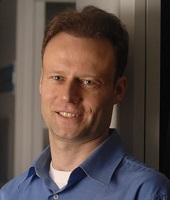
Luterbacher, J.,
Professeur et chaire en Climatologie, Dynamiques de climat et changement climatique, Université Justus-Liegig de Giessen, Allemagne
Abstract
Historical Climatology as an important discipline to study past climate, extremes and natural hazards and their impact on society and cultural heritage
Historical climatology is the use of documentary and written evidence to study historical changes in climate, extremes and their effect on human history and development. Historical Climatology follows two main goals:
- reconstructing temporal and spatial patterns of weather and climate including natural disasters and hazards (floods, storms, drought, heatwaves, earthquakes, fires, etc.) for the period prior to national meteorological networks,
- investigating the vulnerability of past societies and economies to climate variations, climate extremes and natural disasters.
Historical Climatology can contribute to the current debate on the long-term impacts of adverse climate conditions, extremes and natural hazards from a historical point of view. For instance, the study of historical flooding with respect to meteorological causes, frequency, severity and human impacts and damages on cultural heritage and historical monuments provides important information in developing future flood risk management strategies.
The talk presents the tools used by historical climatologist and shows different examples of past natural disasters and extremes from Europe and the Mediterranean and how they have affected human affairs and led to material damage.
10:40 - 11:00
“Les défis du changement climatique régional sur la Méditerranée - La valeur ajoutée des modèles climatiques régionaux (MCR)”
Zanis, P., Professeur, département de météorologie et de climatologie, université Aristote de Thessalonique, Grèce
“Les défis du changement climatique régional sur la Méditerranée - La valeur ajoutée des modèles climatiques régionaux (MCR)”
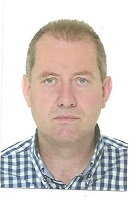
Zanis, P.,
Professeur, département de météorologie et de climatologie, université Aristote de Thessalonique, Grèce
Abstract
Regional climate models (RCMs) are well established tools for the application of dynamical downscaling methods to enhance the regional information provided by Global Climate Models (GCMs) or by the large scale reanalysis. The added value of using RCMs is their ability to simulate atmospheric processes at a wide range of spatial and temporal scales because they represent topographical features in more detail due to their higher resolution. The Mediterranean region is characterized by complex mountain topographies, coastlines, small islands and peninsulas and hence downscaling to higher resolution is necessary for regional climate change impact studies. Reliable and user friendly open access of ensembles of future climate change data from high resolution RCM projections are essential to support decision makers, stakeholders, intermediary users and end-users for climate change impacts, mitigation and adaptation. The need of user friendly interactive web application tools for data extraction from RCMs is discussed.
11:00 - 11:30
Pause café
11:30 - 11:50
“Changement climatique et patrimoine culturel subaquatique dans le paysage méditerranéen”
Argyropoulou, V., Professeur, Uniwa
“Changement climatique et patrimoine culturel subaquatique dans le paysage méditerranéen”
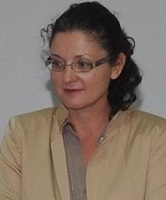
Abstract
Research of Climate Change (CC) impacts on Cultural Heritage (CH) has mostly focused on land CH or CH located along coastlines, with little concern being placed on Underwater Cultural Heritage (UCH). However, it is said that there is more history underwater than in all the museums of the world combined, especially in the Mediterranean Region. The geographical particularities of this region, and the commercial and cultural interaction through Mediterranean sea-roads have strongly affected maritime traditions that go back at least 5,000 years. These traditions can, among others, be identified in sunken shipwrecks and their contents located at the sea bottom, which are unique in the sense that they encapsulate a single moment in time, and are comparable to rare land examples such as Pompeii or Thera. CC impacts on the sea, i.e. warming of oceans, changing of its chemical composition (acidity and salinity), shifting of currents’ pattern etc., places UCH at yet unidentified risks. The presentation will attempt to explore potential CC-related risks of UCH in the Mediterranean scenery, while highlighting the need for baseline research of UCH made from different materials in order to better assess these impacts and make more informed and sustainable management plans for UCH from different periods.
11:50 - 12:10
“De la déduction à la prédiction! Examiner l'impact du changement climatique sur le patrimoine culturel ”
Jigyasu, R., Chargé de programme, Centre de conservation régional de l'ICCROM Athar à Sharjah
“De la déduction à la prédiction! Examiner l'impact du changement climatique sur le patrimoine culturel”

Abstract
12:10 - 12:30
“Comment utiliser les modèles climatiques et la simulation de bâtiments pour évaluer l'impact du changement climatique sur les bâtiments historiques et les collections d'art”
Leissner, J., Professeur, coordinateur général, représentant scientifique, «Fraunhofer»
“Comment utiliser les modèles climatiques et la simulation de bâtiments pour évaluer l'impact du changement climatique sur les bâtiments historiques et les collections d'art”
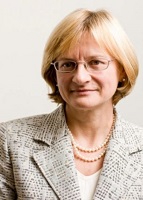
Abstract
Climate change is one of the most important global challenges of our time. Although many studies have been conducted to explore its impact on e.g. biodiversity and agriculture, little is known as to whether and to what extent climate change influences cultural heritage assets. Against this background, the EU-funded "Climate for Culture" project (2009-2014) has investigated the potential impact of changing climate conditions on historic buildings and the collections they contain as well as on the future energy demand in Europe and the Mediterranean. Art objects are often very sensitive to variations in humidity and temperature. The main innovation was to use a combination of simulation and modelling tools to predict more accurately the influence of changing outdoor climate on the indoor and microclimate in historic buildings until 2100. Further, future energy demand for climatisation of historic buildings was calculated. By using an automated procedure an assessment of the damage potential in various climate zones was performed. In order to assess the damage potential of these future climatic conditions, a set of damage functions has been applied to four categories of objects (sculptures, panel paintings, furniture and paper manuscripts). Furthermore, sensitive glass sensors developed within the EU project AMECP (1993-1996) have been used in “Climate for Culture” to assess the corrosive damage potential of current outdoor and indoor climates at the case study sites. Glass sensors act in an integrating way as dosimeters, i.e. they monitor the combined corrosive effects (in the present case, of temperature and humidity) on a longer time scale as well as daily fluctuations.
12:30 - 13:30
Pause déjeuner
13:30 - 13:50
“Les activités anthropiques et leur impact sur les monuments: le cas de l’ Acropole”
Vlazaki Andreadaki, M., Secrétaire général à la culture, Grèce
“Les activités anthropiques et leur impact sur les monuments: le cas de l’ Acropole”
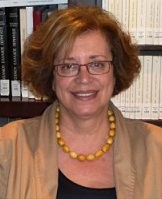
Abstract
Anthropogenic activities and their impact on monuments: The case of the Acropolis.
The phenomenon of climate change, the occurrence of extreme weather phenomena and the degradation of the environment, especially in the urban centers, also affects the monuments which have stood for centuries. Indeed, many claim that the damage suffered in recent decades far exceeds the damage of the past. Our speech attempts to illustrate the data as well as measures to address the adverse effects of human activities on monuments, with particular reference to the emblematic monuments of the Acropolis.
13:50 - 14:10
“Impacts notables du changement climatique sur les monuments historiques arméniens de l'architecture”
Kertmenjian, D., Docteur en architecture, chercheur principal au département d'art arménien de la diaspora et aux relations internationales de l'Institut des arts de l'Académie nationale des sciences de la RA
“Impacts notables du changement climatique sur les monuments historiques arméniens de l'architecture”

Abstract
Notable is the effect of climate changes on preservation of historical monuments in last decades. That so very urgent is the update of documentary information of the case. The State of the Art are the damages and deterioration noticed because of new natural-climatic conditions. The main problem of the research is the fixation and stabilization of the changes occurred. The objectives include: 1. The definition of the climatic impacts, 2. Beside soil media reactions concentration on of “ Mitis” type layered masonry technique in Armenia and its notable behavior towards new changes, 3. Hasty Diagnosis and mapping on three case studies carried out. Methodology is the qualitative study and comparative analysis of the damages in behalf of back weathering, dilapidation and condensation or desalination aspects noticed on newly treated parts.
14:10 - 14:30
“Impact des catastrophes naturelles sur les sites culturels - Leçons de la Grèce”
Lekkas, E., Professeur à la Faculté de géologie et de géoenvironnement de l'Université nationale et kapodistrienne d'Athènes, président de l'Organisation de planification et de protection contre les séismes, Grèce
“Impact des catastrophes naturelles sur les sites culturels - Leçons de la Grèce”

Abstract
Greece and the broader Easter Mediterranean have very dynamic geomorphological, environmental and geodynamic regime, that provided a very unique landscape to its inhabitants since prehistoric times. The scenic landforms that were shaped by the constant natural processes and the abundance of hazardous phenomena of the region, such as floods, earthquakes, volcanos, were to a degree part to the ancient societies and their heritage. Their symbiosis, one that lasts for thousands of years, has transferred to our modern societies the responsibility to protect the remnants of this heritage. In the Greek landscape, natural disasters are looming over numerous invaluable cultural sites. Using modern tools we are in the process of understanding the natural risks that threaten cultural sites, especially from new challenges arising from climate change and the associated the intensification of hydro-meteorological and climate-related hazards.
14:30 - 14:50
“Approche basée sur les écosystèmes pour l'adaptation au climat dans la lagune de Kune Vain, Lezha, Albanie”
Çuçi, O., Sous-ministre au ministère du Tourisme et de l'Environnement, Albanie
“Approche basée sur les écosystèmes pour l'adaptation au climat dans la lagune de Kune Vain, Lezha, Albanie”

Abstract
Lezha region is situated on the coastal zone of Adriatic Sea, a cross road to north of Albania. It is rich in historical sites and cultural heritage with castles and sites from medieval age. Due to climate changes and alteration of the landscape by human settlements and tourism development, it is facing frequently flood events due to torrential storms. Furthermore, the nearby Kune-Vain lagoon, a nature touristic site, very rich on birds and other animal habits, is threatened by sea level raise and habitat loss. A number of adaptive measures and interventions are made based on ecosystem services such as reforestation, dune restorations, maintain the water communication flow with the sea, as well as community involvement and education.
14:50 - 15:20
Pause café
15:20 - 15:40
“Les impacts de l'élévation du niveau de la mer sur les sites du patrimoine mondial de l'UNESCO de la Méditerranée”
Vafeidis, A., Professeur, docteur, Université de Kiel, chef de groupe, Groupe de recherche sur les risques côtiers et l'élévation du niveau de la mer, Allemagne
“Les impacts de l'élévation du niveau de la mer sur les sites du patrimoine mondial de l'UNESCO de la Méditerranée”

Abstract
Athanasios T. Vafeidis & Lena Reimann
Climate-induced sea-level rise is exacerbating the risk of coastal hazards, such as flooding and erosion, directly threatening UNESCO World Heritage sites (WHS) located in coastal areas. The Mediterranean region has a particularly high concentration of cultural WHS in coastal locations as several ancient civilisations have developed in the region. This study presents an index-based approach that allows for assessing and forecasting WHS at risk from coastal flooding and erosion in the Mediterranean under four sea-level rise scenarios, until 2100. We show that, already today, 37 out of 49 cultural WHS located in low-lying coastal areas of the Mediterranean are at risk from a 100-year flood and 42 from coastal erosion. Until 2100, flood risk may increase by 50% and erosion risk by 13% across the region, with considerably higher increases at individual sites. Most affected countries include Italy, Croatia, Greece and Tunisia. These results provide a first-order assessment of where adaptation is most urgently required. Our findings can be used by policymakers to steer detailed research at local-scale, which can provide the necessary information for devising innovative adaptation strategies particularly suited to the characteristics of each specific WHS.
15:40 - 16:00
“Changement climatique contre sites et monuments archéologiques: une bataille inégale”
Veleni-Adam, P., Docteur archéologue, directeur de la Direction générale des antiquités et du patrimoine culturel
“Changement climatique contre sites et monuments archéologiques: une bataille inégale”

Abstract
The climate change is always a major concern because it can cause natural disasters and serious damage to World Cultural Heritage. This is particularly so today because many natural disasters are brought about, or increased, by climate change throughout the world. The extreme weather conditions cause drought, fires, flooding from rivers and lakes and affect the natural and cultural environments in Greece.
Reducing and managing the risk of natural disasters are significant challenges before the world community. Climate change and natural disasters are the consequences of uncontrolled human activity and poor environmental management, bringing damage to World Heritage monuments.
16:00 - 16:20
“Conceptualiser la valeur de la culture”
Papandreou, A. Professeur au Département d'Economie de l'université d' Athènes
“Conceptualiser la valeur de la culture”

Papandreou, A. Professeur au Département d'Economie de l'université d' Athènes
16:20 - 16:40
“La valeur socio-économique de la culture: Evaluation des effets du changement climatique”
Koundouri, P., Université d'Economie et de Commerce
“La valeur socio-économique de la culture: Evaluation des effets du changement climatique”
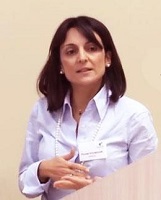
Abstract
In October 2018 the IPCC special report on “Global Warming of 1.5 ºC” warned that there are only a dozen years for global warming to be kept to a maximum of 1.5C, beyond which, even half a degree will significantly worsen the risks of drought, floods, extreme heat and poverty for hundreds of millions of people around the globe. Urgent and unprecedented changes are needed to reach the target. Such a transition can be achieved by developing structured and methodologically sound approaches to recognizing, demonstrating and capturing the Total Economic Value of resources.
Although research on the economic and social effects of climate change on cultural resources and services, is not extensive, my contribution will focus on the methods available to estimate and monetize these effects and understand the social value of conserving culture. Central to my speech will be the concept of the ‘total economic value' and in particular the value humans derive from cultural resources, within a framework of climate change, uncertainty and ambiguity. The estimation of this value is crucial for understanding how much it should be invested in order to conserve cultural goods and services, as well as develop efficient policies for sustainable cultural management.
The speech will present my research on refining theoretical models and empirical methods used in the field of economics, towards: (a) better understanding of the concept and determinants of the total economic
value of cultural goods and services, (b) more accurate modelling of this value, (c) more robust estimation of this value, (d) more efficient integration of this value in interdisciplinary cultural management and policy-making, while (e) incentivizing the development of technological and social innovations that integrate this value and accelerate these innovations in the market.
20:30
Dîner pour les intervenants au Musée de l'Acropole
(sur invitation seulement)
Avant le dîner, le Professeur Th. P.Tassios s'adressera aux invités sur le thème: " Principes des Grecs Anciens sur l'environnement"
“Principes des Grecs Anciens sur l'environnement”

Abstract
In Greek Mythology, several plants and animals were considered sacred and were protected. The Presocratic philosophers, who taught that we all belong to a “Cosmic Ensemble”, paved the way for the respect to Nature. During the classical period, Plato himself was very much concerned with the damaging effects of mountain deforestation on the distribution of rainwater that would, as a consequence, flow rapidly to the sea and be wasted. Aristotle supported the idea of a “common substance” of all living species. He also predicted, in his Meteorologika, the risk of some humid regions becoming arid. Finally, it is remarkable that, thanks to their correct heliocentric beliefs and their knowledge of the Earth’s sphaerical form, the Greeks undermined the anthropocentric view of a flat Earth, centre of the universe, offered by the Gods to the humans as a gift to be exploited unconditionally.
09:10 - 09:30
“Renforcer la résilience du patrimoine culturel”
Moropoulou, A., Professeur, École de génie chimique, Université nationale Polytechnique d'Athènes, Grèce
“Renforcer la résilience du patrimoine culturel”
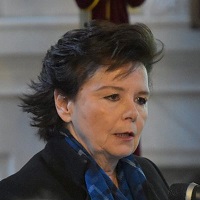
Abstract
In all parts of Europe Cultural Heritage represents a significant economic sector on which many communities depend. However, built CH artefacts are under continuous degradation from environmental and anthropological effects, and face significant risk of catastrophic damage from events such as flooding, earthquakes, storm and fires, which are themselves exacerbated by the impact of climate change. Action must be taken to manage these risks and mitigate their effect, however traditional approaches have been fragmented between different areas of expertise and disciplines, without regard to the combined effect of such uncoordinated interventions, leading to ineffective and often detrimental impact on the very assets they seek to protect.
A new holistic approach is proposed to the effective safeguarding and management of built CH artifacts through the provision of a decision support platform based upon interdisciplinary resilience modelling of current and future risks and interventions, monitoring and analysis of CH assets and natural hazards, creation of a semantic knowledge base and vulnerability, risk and cost modelling for planning and implementing intervention strategies.
The main goal of this approach is to deliver an architecture that takes account of and supports mitigation of the inter-related impact of environmental, climatic and anthropogenic factors on such significant cultural heritage assets as are represented by the world heritage sites acting as primary use cases for the project. The economic impact of such interventions is also addressed, since the financial importance of tourism at these sites must be balanced with the cost of intervention to protect them whilst recognising the socio-economic benefits to be gained.
09:30 - 09:50
“Aperçu de l’action de l’UNESCO sur le changement climatique et le rôle du patrimoine culturel”
Boccardi, G., Spécialiste du programme Unité Culture et urgences / Préparation aux situations d'urgence et interventions, Secteur de la culture de l'Unesco
“Aperçu de l’action de l’UNESCO sur le changement climatique et le rôle du patrimoine culturel”
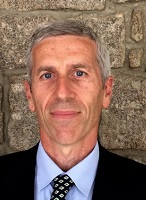
Abstract
My presentation will provide an overview of the policy framework related to climate change and cultural heritage at UNESCO, with particular emphasis on the challenges that needs to be addressed by UNESCO and its Member States. It will also present the key materials, tools and initiatives that have been developed over the years, notably in the World Heritage context, as well as those that could be undertaken in the future, emphasizing in particular the opportunities associated with the implementation of the Paris Agreement in harnessing the potential of heritage for CC adaptation. Finally, some reflections will be shared on the long-term implications of climate change, in cultural terms, for our societies, and on how this may affect the heritage sector.
09:50 - 10:10
“Impact des changements climatiques sur le patrimoine culturel en République tchèque”
Jaresova, S.I., Direction générale, l'architecte paysagiste - spécialiste des jardins et paysages historiques
“Impact des changements climatiques sur le patrimoine culturel en République tchèque”

Abstract
Historic Gardens, Parks and artificially composed Landscape are very specific fragile ”Green Monuments”.
The impact of climate changes is evident in many aspects and terms of manifestations of excessive drought and slow global warming with a direct impact on groundwater levels.
Through the all levels of protection, we realized very deteriorated health condition of trees, which has a strong influence on the composition of the green monuments.
The trees are gradually drying out and later dying or they are attacked by the various insects (wood-destroying), eventually by fungal diseases. Vast areas of woods and parks are infected and have to be cut down (some examples from our territory will be demonstrate/presented).
In my lecture I’ll concentrate to the most important problems of the monument protection like:
- Forms and methods of preservation and presentation of green monuments affected by climate changes
- Necessity to keep water in the landscape, renew the original retention reservoirs, historical ponds, sewers and complete the renewal of water management systems.
- Planning and working on the possibilities of rainwater retention with the use of modern elements.
On all these tasks we are closely cooperating with ministry of agriculture, environment, social affairs, as well as transportation. As the most important and crucial aim we consider the moment how to retain rain water in cultural landscape.
10:10 - 10:30
“Mobiliser le secteur du patrimoine culturel au service de l'action climatique: introduction au groupe de travail de l'ICOMOS sur le changement climatique et le patrimoine”
Potts, A., JD, coprésident du groupe de travail ICOMOS sur le changement climatique et le patrimoine, Nixon Peabody LLP, États-Unis
“Mobiliser le secteur du patrimoine culturel au service de l'action climatique: introduction au groupe de travail de l'ICOMOS sur le changement climatique et le patrimoine”
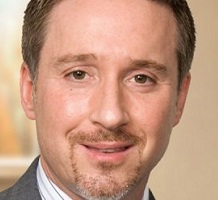
Abstract
Mobilizing the cultural heritage sector for climate action: an introduction to the ICOMOS Climate Change and Heritage Working Group”.
In December 2017, the Triennial ICOMOS General Assembly meeting in New Delhi, India adopted Resolution 19GA 2017/30 entitled “Mobilizing ICOMOS and the Cultural Heritage Community To Help Meet the Challenge of Climate Change.” The CCHWG was formed to advance the Resolution’s ambitious mandate. The Group is currently working on a variety of initiatives around the world in line with ICOMOS’s view that heritage sites as well as local communities' intangible heritage, knowledge and practices constitute an invaluable repository of information and strategies to address climate change, even while those resources are themselves at risk from climate impacts.”
10:30 - 11:00
Pause café
11:00 - 11:20
“Trouver des mesures d'adaptation aux changements climatiques réalisables et efficaces pour les lieux historiques nationaux gérés par Parcs Canada”
Scarlett, D., Architecte en chef (patrimoine bâti)
“Trouver des mesures d'adaptation aux changements climatiques réalisables et efficaces pour les lieux historiques nationaux gérés par Parcs Canada”
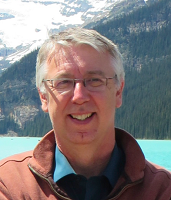
Abstract
Chief Architect (Built Heritage)
Indigenous Affairs and Cultural Heritage Directorate
Parks Canada / Government of Canada
Finding feasible and effective climate change adaptation measures for national historic sites managed by Parks Canada.
Parks Canada is mandated to protect and present nationally significant examples of Canada's natural and cultural heritage, including 171 national historic sites across the country located in vastly different geographic settings and climatic zones. Parks Canada is increasingly having to deal with the effects of climate change at its sites, including (but not limited to) increased wildfire, permafrost thaw, sea level rise, extreme temperatures and windstorms, and sustained heavy rainfall and flooding. Mr. Scarlett’s presentation will share Parks Canada’s current approach to identifying climate change vulnerabilities and risks at its heritage places, and its work to find feasible and effective adaptation measures to face climate change. The presentation will reference the findings of climate change adaptation workshops Parks Canada has held across the country - from Newfoundland to the Yukon Territory - and the tools and processes it is using to develop ‘best practices’ for responding to climate change at heritage places.
11:20 - 11:40
“Stratégie d'évaluation d'impact préventive en surveillant les limites de distorsion pour une évaluation précoce du risque”
Tornari, V., Head of Holography Metrology lab, IESL/FORTH
“Stratégie d'évaluation d'impact préventive en surveillant les limites de distorsion pour une évaluation précoce du risque”
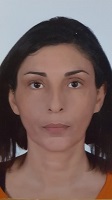
Abstract
Due to climate change and temperature increase a variable environmental impact is experienced by artistic and historical structures. Especially relative humidity (RH) fluctuations are known to affect the equilibrium moisture content of materials forcing them to a constant displacement in an effort to reach or keep in equilibrium with surrounding environment. Each change to maintain equilibrium leads to transient structural distortion. In controlled environments, for example Museums, maintaining equilibrium ranges in values usually within the safe distortion limits. Repeated deformation within the distortion limits causes a slow but steady ageing, while the off-limits distortion can jeopardise structural integrity and lead to irreversible damage. The persistent effort of materials to maintain equilibrium may endanger structural integrity and lead to irreversible damage even within assumed safety limits.
A preventive strategy for preserving cultural heritage from climate impact should be based on measures to monitor, assess and predict the critical phases of deterioration, whether within or outside the safe boundaries, to take timely measures that prevent further structural deterioration and lead to irreversible wear and tear. In preventive conservation implementing measures that could foresee in advance the turn of critical phases of deterioration and prevent further deterioration and fracture is thus becoming a necessary step.
The direct quantitative monitoring of surfaces has been experimentally tested and a feasible way of understanding the climate impact from objects reactions has been confirmed. A portable system based on remote real-time high-information content coherent interferometry has been developed to allow the automatic and remote acquisition of sequential high-resolution full-field surface images by recording the surface deformation changes on hygroscopic materials used in cultural heritage during cycles of induced RH changes. Deformation as a respond to RH change provides a risk index termed deformation threshold. Depending on material parameters the deformation threshold differ significantly allowing thus a classification of environmental risk according to deformation threshold of material at risk. The material responds immediately to RH change depending on specific parameters and age. The deformation threshold differs accordingly.
The remote monitoring of reactions with a classified index of deformation threshold to characterise environmental risk it was firstly developed in the experimental workpackage of Climate for Culture European project (FP7-ENV-2008-1 CfC no. 226973). It allowed the development of a preventive methodology assessed through threshold violation recorded directly from surface responses. Indication of the natural onset of deterioration was traced long before visible damage, allowing thus potential preventive measures to be taken in advance.
An ongoing study (in cooperation with C2RMF and Louvre Museum) aims to certify the altered deformation threshold values as reference values prior to the onset of deterioration; and classify the warning signal of deformation threshold in regards to risk urgency.
11:40 - 12:00
“Rôle du climat dans les constructions de musées. Etudes de cas, Albanie”
Bushati, E., Vice doyen de la faculté d'architecture et d'urbanisme
“Rôle du climat dans les constructions de musées. Etudes de cas, Albanie”
Abstract
12:00 - 12:20
“Projet HERACLES: Mission et vision pour relever le défi CC”
Padeletti, G., Conseil national de la recherche en Italie (Impacts du changement climatique sur le patrimoine culturel, projet HERACLES), Italie
“Projet HERACLES: Mission et vision pour relever le défi CC”
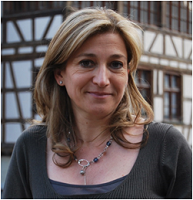
Abstract
Europe has a significant cultural diversity together with exceptional ancient architectures attracting millions of tourists every year. This incalculable value and global assets have to be preserved for future generations. The effects of floods, extreme wind, storms, rains on these ancient and fragile assets are seriously amplified. Advanced techniques, commonly used for modern structures, cannot be applied to preserve their originality. To preserve ancient valuable structures, dedicated technique, material and methodologies have to be applied. In order to address all the above challenges, the concept underpinning HERACLES project is to propose a holistic, multidisciplinary and multi-sectorial approach with the aim to provide an operative system and eco-solutions to innovate and to promote a strategy and vision of the future of the CH resilience. The HERACLES vision is tested in Greece and in Italy.
12:20 - 12:40
“Le patrimoine mondial sur le sol brésilien: les défis de la conservation dans un scénario de variabilité climatique”
Zanirato, S.H., Professeur de cours de gestion de l'environnement à l'Université de São Paulo. Coordonnateur au Brésil de la chaire UNESCO "Tourisme, culture et développement"
“Le patrimoine mondial sur le sol brésilien: les défis de la conservation dans un scénario de variabilité climatique”
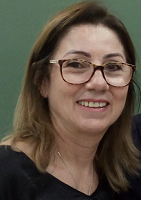
Abstract
Firstly, I will start by giving the audience an overview of the global climate change, mentioning the importance of adopting a more realistic view of the problem. Next, I will give information about the climate change in Brazil and the future scenarios from the Brazilian Model of Climate Changes, mentioning the current risks to its cultural and natural heritage, caused by urban expansion, the advance of the agricultural frontier, and also the growth in tourism. Then, I will also discuss future risks such as the rise of sea level in coastal cities, the Amazon forest turning into a savanna, and the significant loss in biodiversity of the South Atlantic Ocean islands. Furthermore, I will tackle the challenges of political actions regarding the control of these risks, which involve social participation, both in terms of recognizing the global climate changes, and facing the risks to the cultural and natural heritage.
12:40 - 13:00
“Certaines mesures d'adaptation atténuant l'impact du changement climatique sur le patrimoine”
Kyriakidis, E., Maître de conférences en préhistoire égéenne, Université de Kent, Royaume-Uni
“Certaines mesures d'adaptation atténuant l'impact du changement climatique sur le patrimoine”

Abstract
Climate change is a phenomenon that has been happening through the ages. Archaeological evidence indeed supports the existence of multiple periods of climate change, some of which were partly induced by humans. Global warming is however a particularly worrying and acute phenomenon with multiple repercussions on cultural heritage world wide. It is important however to be realistic and accept that the heritage world can do very little other than raise awareness to prevent global warming. What it can do is work to mitigate its effects. The Heritage Management Organization has a set of advice for heritage managers that have been distilled from its decade long scientific experience on the topic.
13:00 - 13:20
“Les inondations du mont Olympe au site archéologique de Dion”
Pandermalis, D., Président du musée de l'Acropole
“Les inondations du mont Olympe au site archéologique de Dion”
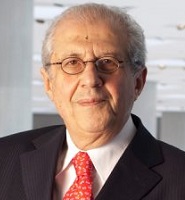
Abstract
13:20 - ....
Adoption du document conclusif / Note conceptuelle
Conférence de presse